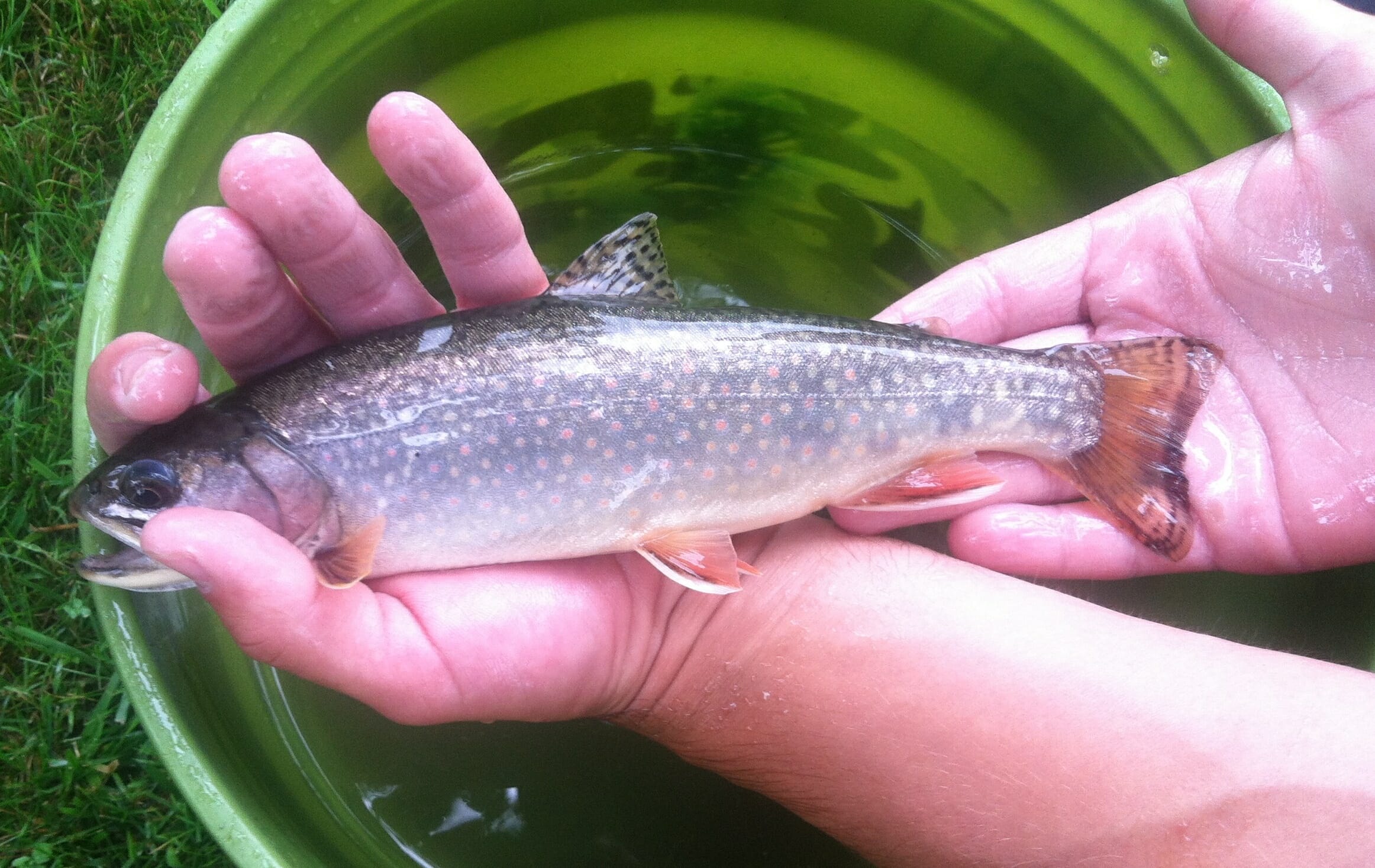By Seth Coffman
For many Virginians, the Eastern brook trout (above) is the iconic symbol of pristine streams and wild places. Brook trout go hand in hand with clean, cold water, and seeing one rise to your well-presented fly never gets old.
That is just one of the many reasons TU has been working to improve habitat for Virginia’s state freshwater fish. TU had another productive year working on that mission in 2017.
The headwaters of the James and Shenandoah rivers in Virginia harbor some of the best coldwater streams and strongest populations of native brook trout in the entire state. Working with partners, local chapters and landowners, TU has been improving and restoring brook trout habitat in these watersheds for almost a decade and during 2017 we continued to move the needle on restoring watersheds and improving angling opportunities.
Through restoration work, monitoring and citizen science, we have expanded the presence of brook trout in Virginia and strengthened existing populations.
Here are some of the highlights:
Passage Creek
With help from the Virginia Department of Game and Inland Fisheries, and in partnership with the U.S. Forest Service, TU completed a stream restoration project on Passage Creek near Edinburg.
TU installed in-stream structures to improve pool habitat and to add micro habitat features to the stream, and removed an obsolete weir blocking fish movement.

Passage Creek weir before and after removal.
After the restoration, TU, DGIF and FS personnel teamed up to collect more than 100 wild brook trout from nearby streams with robust populations, and those fish were transferred to Passage Creek. TU and its partners will survey the stream this summer looking for young of year fish indicating a successful spawn. This project was funded with National Forest stamp money.
North River
In Augusta County, after 10 years of work, TU, DGIF, and the U.S. Forest Service completed a large restoration effort on the North River outside of Harrisonburg.
The stream’s habitat had been severely impacted by flooding and by subsequent “restoration” efforts from decades ago. With time came a better understanding of how streams responding to flooding and what restoration techniques work best.
Armed with that knowledge, TU and its partners restored the river channel to its natural pattern, dimensions and profile, resulting in more perennial flow, deeper pools, and proper floodplain function. In all, more than 5 miles of stream have been restored and brook trout populations are thriving.
Cornelius Creek
In the Upper James River watershed, TU and the Forest Service teamed up again on a restoration program to address erosion on Cornelius Creek, a fabulous little brook trout stream in Botetourt County.
Just upstream from the parking area at the junction of Cornelius and North creeks, a large slide and erosion was causing terrible sedimentation into the creek, which is in the headwaters of the Jennings Creek watershed. The eroding streambank on the outside turn of the stream was stabilized and a floodplain bench was created forming a deep fish holding pool and reducing the sediment pollution to the stream. This will improve wild trout habitat — and fishing — throughout the area.
Looking ahead
There is still more to do to sustain and improve brook trout in Virginia, but projects like these lay the foundation for additional work, stronger partnerships, angler and community engagement.
Expanding the range of brook trout in Virginia and repatriating them to native waters are hallmarks of TU’s Home Rivers Initiative programs. We look back on 2017 with an eye on the future, knowing the work we do enhances resiliency of these coldwater systems, increases angling opportunities, and improves water quality. This not only benefits the fish but the communities of people that love and call these watersheds home.
Seth Coffman manages Trout Unlimited’s Shenandoah River Headwaters Home Rivers Initiative. When he is not at work on the stream he often can be found fishing and hunting in Virginia’s mountains.



